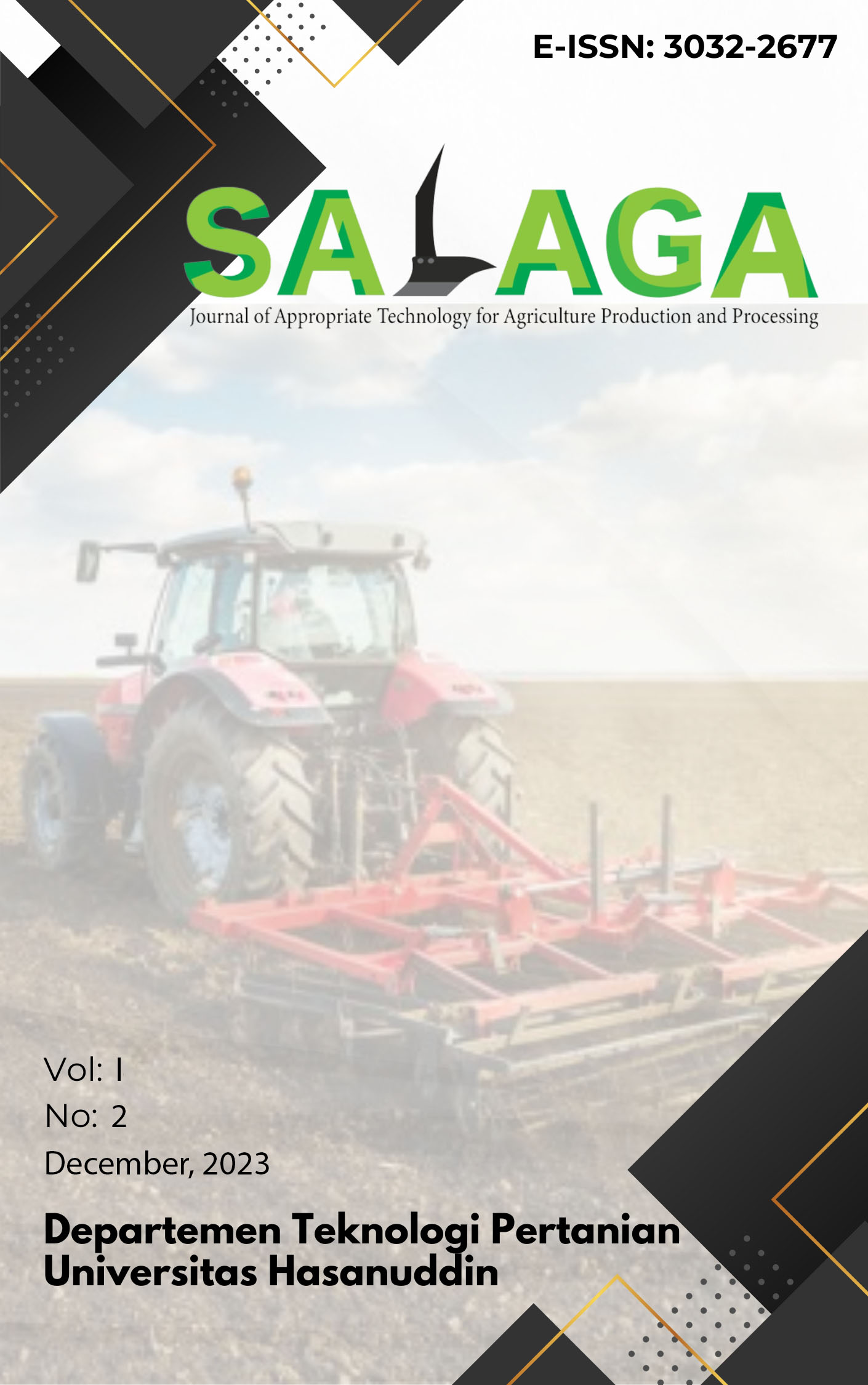Effects of Land Cover Change on River Discharge Conditions in the Mamasa Watershed Using the SWAT Model
Article Sidebar
Land cover changes occurring in a watershed will affect the ecosystem in that area. The Soil and Water Assessment Tool (SWAT) model is a tool that can be used to predict the impacts of land use on water, sedimentation, and chemical levels in a watershed. The Mamasa watershed is one of the sub-watersheds of the Saddang watershed, covering approximately 105,253 ha. This study aims to determine the land cover changes in the Mamasa watershed and their impacts on water discharge using the SWAT model. Several steps were undertaken, including image interpretation to obtain an overview of land cover in the years 2011, 2016, and 2020, which were then used to form Hydrology Response Units (HRU). Next, the SWAT model was run, involving delineating the watershed boundaries, defining HRU, integrating climate and HRU data, running SWAT simulations, and performing validation. The results of land cover classification from 2011 to 2016 showed an increase in secondary forest land by 4,896.68 ha (4.65%) and a decrease in shrubland by 9,500.60 ha (9.03%). The land cover classification from 2016 to 2020 indicated a decrease in secondary dry forest land by 6,349.43 ha (6.03%), with an increase in paddy field area by 3,141.92 ha (3%). These land cover changes led to a decreasing trend in water availability, as evidenced by increased discharge fluctuations from 16.50 to 21.65, in accordance with the SWAT simulation results, which increased from 6.73 in 2011 to 9.93 in 2020. The validation results of the SWAT model for the year 2011 showed a Nash-Sutcliffe Efficiency (NSE) value of 0.58 and and R2 value of 0.61. The validation for the year 2016 resulted in an NSE of 0.6 and an R2 of 0.68, while the validation for the year 2020 produced an NSE of 0.6 and an R2 of 0.65. All three validations fall under the satisfactory category, indicating that the SWAT model can be used to simulate the discharge of the Mamasa watershed.
Dara,M. (2018). Pemetaan Jasa Ekosistem Di Daerah Aliran Sungai Mamasa. Skripsi. Universitas Hasanuddin. Makassar.
Gleeson, T., & Manning, A. H. (2008). Regional Groundwater Flow in Mountainous Terrain: Three‐Dimensional Simulations of Topographic And Hydrogeologic Controls. Water Resources Research, 44(10).
Harifa, A. C., Sholichin, M., & Prayogo, T. B. (2017). Analisa Pengaruh Perubahan Penutupan Lahan Terhadap Debit Sungai Sub DAS Metro dengan Menggunakan Program ARCSWAT. Jurnal Teknik Pengairan: Journal of Water Resources Engineering, 8(1), 1-14.
Pratama, Willy, Yuwono & Slamet Budi. (2016). Analisis Perubahan Penggunaan Lahan terhadap Karakteristik Hindrologi di DAS Bulok. Jurnal Sylva Lestari, 4(3): 11−20.
Pribadi, A. D., Kusumawati, R. D., & Firdausi, A. A. (2021). Pengaruh perubahan tutupan lahan terhadap karakteristik hidrologi di DAS Sampean Kabupaten Bondowoso. Jurnal Ilmiah Desain & Konstruksi, 19(2), 84-101.
Rau, M. I., Pandjaitan, N., & Sapei, A. (2015). Analisis Debit Sungai dengan Menggunakan Model SWAT pada DAS Cipasauran, Banten. Jurnal Keteknikan Pertanian, 3(2).
Salim, A. G., Dharmawan, I. W. S., & Narendra, B. H. (2019). Pengaruh Luas Tutupan Lahan Hutan Terhadap Karakteristik Hidrologi DAS Citarum Hulu. Jurnal Ilmu Lingkungan, 17(2), 333-340.
Selawati, S. (2022). Analisa Erosi Pada Sub DAS Mamasa Menggunakan Model SWAT (Soil and Water Assessment Tool). Skripsi. Universitas Hasanuddin. Makassar.
Sufiyan, I., Magaji, J. I., Oga, A. T., & Zaharaddeen, I. (2019). Analysis of Hydrologic Response Units and Impact of Flooding in Kuala Terengganu Sub-basins River Catchment in Malaysia. Asian Journal of Geographical Research, 2(1), 1-16.
Suprayogi, S., Purnama, L.S., & Darmanto, D. (2015). Pengelolaan Daerah Aliran Sungai. Yogyakarta : Gadjah Mada University Press.
Utama, L., Saidi, A., Berd, I., & Mizwar, Z. (2017). Kawasan Banjir dan Pola Aliran Sungai Berdasarkan Morphometri Pada Daerah Aliran (DAS) Batang Kuranji Sumatera Barat. Jurnal Teknonologi, 9(4), 1-4.
Samsuar
Faculty of Agriculture, Hasanuddin University
Indonesia
Daniel Useng
Faculty of Agriculture, Hasanuddin University
Indonesia
Nazif Ichwan
The United Graduate School of Agricultural Science, Ehime University
Japan
Febriana Intan Permata Hati
Faculty of Agriculture, Hasanuddin University
Indonesia
Copyright (c) 2023 Asrianto, Samsuar, Daniel Useng, Hazif Ichwan, Febriana Intan Permata Hati

This work is licensed under a Creative Commons Attribution-ShareAlike 4.0 International License.

